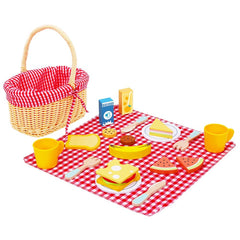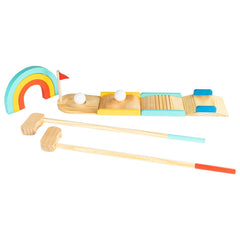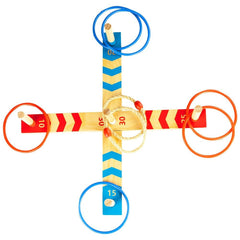Ever found your little ones bored even when their toy box seems to be bursting? Perhaps you have been wondering why the same unused toys you find yourself walking over day after day lack appeal. If so, you are not alone.
We have an answer to this situation. It is precisely where toy rotation can do magic. You can transform your toddler's play sessions entirely through toy rotation, even with the same toys. It’s only how you show them up.
What Is Toy Rotation?
Toy rotation is the concept of giving your child a smaller array of toys at any one moment while the rest are stashed out of view. Generally, you rotate the toys every week or two. It's like giving your child brand-new toys without having to buy anything new.
Instead of a never-ending mound of toys scattered all around, you create a neat, orderly environment that helps your children concentrate, investigate, and maximise what's in front of them. You can combine 2–3 or more contrasting toys so your child never runs out of fun.
Why Does Toy Rotation Work?
Toy rotation is a wonderful way to make children reuse their old toys without overwhelming them or making them feel bored. You can teach great and meaningful habits to your little ones in their early developmental years.
-
Keeps play engaging and fresh: Children who have fewer toys often play with those limited toys and use them for more creative purposes and for longer stretches of time. Then, when you pull new toys from storage, kids are delighted to see them again, like they are brand new, and they try to think of new ways to play with them. This fosters innovative thinking and reusing of toys.
-
Avoids overstimulation: For young children, too many options can be taxing. A limited range helps them to concentrate and lessens decision fatigue. This also promotes increased attention spans in kids that have been deteriorating these days due to overstimulation and digital screens.
-
Promotes Imaginative Play: Children sometimes play more imaginatively and meaningfully when there is less stuff on the plate. They investigate what a toy can accomplish and create stories around it more often.
-
Facilitates Cleaning: Fewer toys imply less mess and faster clean-ups. Children find it simpler to learn where things go when there are not hundreds of objects to sort. This process promotes responsibility in kids.
How to Do Toy Rotation?
You do not need to have fancy and elegant shelves or costly storage cases for toy rotation. Follow this step-by-step guide to design a toy rotation system that fits your child and yourself.
Step 1: Sort Through Every Toy
First, gather all the toys your child owns from throughout the home. Segregate them to view your current working conditions. Though this section can seem a bit wild, do continue it with patience!
Step 2: Sort into categories
Organise related toys—blocks, puzzles, soft toys, vehicles, pretend play toys, books, and so forth. This process clarifies your toy collection as well as figures out if your little ones have outgrown anything.
Step 3: Select a small selection
From every category, pick a handful of toys. Seek variation—something from construction blocks, something for pretend play (a play kitchen set), something for fine motor skills (puzzles) and a few books for calm time. For toddlers and preschoolers, start with about six to eight toys.
Step 4: Sort the remainder
Sort the remaining toys into storage boxes or containers and place them somewhere out of sight—on a top shelf, in a cupboard, beneath the bed or wherever it would be most convenient for you. Try to keep it far from the reach of your children.
Step 5: Turn Often
According to your observations and needs, rotate some toys every two weeks or week. You might turn only a few at once, or you can also change the whole set. See how your youngster plays and modify as you go.
Toy Rotation: Sample Guide
If it still feels a bit too much, then we will walk you through this sample guide to help you understand the concept of toy rotation clearly.
Assume for a moment that you have a three-year-old who likes pretend play and construction toys. One basic weekly toy rotation arrangement can look something like this:
-
Wooden building pieces
-
A little basket of animal figures
-
Some large puzzles
-
2 cherished children’s books
-
A play kitchen set complete with pretend food.
-
It could be a soft toy, perhaps their cuddly rabbit, or anything else they like.
-
A musical instrument like a tambourine or a musical set for kids.
After a week or so, you may replace the books, swap the blocks for stacking cups, and modify the animals to be cars. While still providing a balanced variety of play possibilities, each rotation keeps everything intriguing and fresh.
How Often Should You Turn Toys Around?
Here, there is no set quick rule. While some parents choose to rotate weekly, others might do it two weeks or two months. Your child may quickly show signs of losing interest in what is out, which is a good indicator that it is time for a change.
If your child develops a genuine bond with a toy, it's acceptable to extend its use. Their play should be enjoyable rather than stressful.
Final thoughts
For many households, toy rotation changes everything. It clears clutter, elevates the importance of playing, and allows your child to discover toys they may have previously disregarded. Best of all, it reminds you of the enchantment and thrill of play—without always expanding your toy collection.
Start simple, be adaptable, and appreciate the innovations!
We hope that the guide above gave you useful insights and will help you find the next best toy for your kids that stimulates screen-free playtime. Explore our entire collection of toys at Barnshenn for newborns and toddlers. Are you in search of additional inspiration? Hop on to our social media handles, like TikTok, Pinterest, and Instagram, for more gift inspiration for toddlers. See you in the next blog.
FAQs
1. When can I start toy rotation for my kids?
Ans: You can start right from infancy. Even young children gain from a limited assortment of age-appropriate toys, rotated every week or two.
2. Are there any toys that I can always repeat?
Ans: Try for equilibrium. Try and add toys that support several kinds of play—building, pretend, fine motor, sensory, and reading skills. See what your youngster likes and add more of those in your rotation if they are in a phase of enjoying cars, let’s say.
3. How can I store the rotated toys?
Ans: Store toys in a dry, easily accessible area. Clear boxes, baskets with lids, and big tote bags work well.





